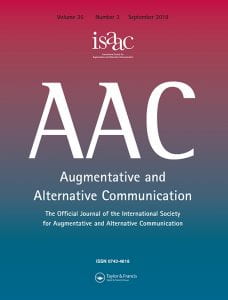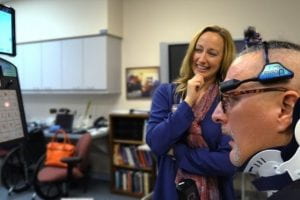Kevin Williams and Christine Holyfield
Webcast Description
This presentation was first made at the Future of AAC Research Summit on May 13, 2024.
Please cite as
Williams, K. & Holyfield, C. (2024, May 13). Future of AAC Technologies: Priorities for inclusive research and implementation. [Conference session]. Future of AAC Research Summit, Arlington, VA. https://tinyurl.com/AAC-Williams-future-2024
Video production by Rylie Mueller (Penn State University)
Additional Resources
 McNaughton, D., & Light, J. (2013).
McNaughton, D., & Light, J. (2013).  In a recent
In a recent